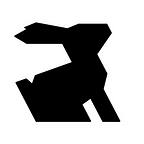This is part of a series of blog posts featuring some of the amazing talent we have working on the technology behind Ubiquity6.
This week, we’re excited to be featuring Raven Jiang. Raven is a technical team lead at Ubiquity6 where he works on the engineering architecture for our front end product.
What were you doing before Ubiquity6?
I grew up in Singapore and went to Stanford for college which is where I met Anjney. I was always a fan of working on big problems and pushing the boundaries of innovation through new technology. I’ve been interested in AR and VR for years, and had previously built many prototypes for AR gameplay for VR controls before motion controllers were released for HTC Vive or Oculus while I was at Stanford. Before Ubiquity6, I worked on consumer products at Facebook and at Tesla where I worked on auto-pilot and building VR experiences with the 8 camera feed of the car.
Why did you choose to join Ubiquity6?
I chose to join Ubiquity6 because I felt that this was the most exciting problem I could be working on today. I grew up reading science fiction and being a part of that sub culture has given me a lot of cool ideas for persistent, global, AR experiences. I also felt like that this was the right time to start a company like this. Being very ingrained in the AR space, I felt the technological progress we’ve been making in the domain was on track for someone to come in and build something to deliver on the Ubiquity6 vision. I joined Ubiquity6 because it is one of the most ambitious engineering challenges that combines my interests and experiences in both AR and web.
Can you tell us about a project you worked on?
I was recently working on a web based 3D visualization tool for us to be able to look at the 3D point clouds that we create during the mapping process. This is helpful in improving our mapping and computer vision systems which is critical to the Ubiquity6 experience. We built the visualization tool on a combination of React and 3.js and it utilizes the most current and modern web technology stack. There were a lot of interesting challenges in terms of building an extensible 3D rendering application on top of a web graphics library and React and I felt that there are very few products and tools out there that combine these technologies in the way that we do here at Ubiquity6. We see a lot of potential in taking the approaches and lessons we have learned from working with these frameworks and applying that to radically transform the consumer experience for AR.
What is your proudest moment at Ubiquity6 so far?
One of the most exciting moments was probably when we managed to get a unified experience that works on both web and mobile while supporting AR and non AR 3D renderings. We are doing a lot of things that are completely new and there aren’t clear solutions you can find so you really have to take in the expertise of people on the team and put them together in a new way to solve those problems. After spending countless hours trying to figure out a lot of the core, hard problems, there was a point where we realized that a lot of what we were setting up to do was actually possible and we just needed to do it.
What are 3 words to describe Ubiquity6?
Fast-paced, challenging, and fun!
What advice do you have for people looking to join the team?
I think that the most important thing is to be open minded and genuinely excited about the challenges at hand. We’re at an interesting intersection where a lot of people are working on foundational problems in AR but its still new enough that you need to be able to be okay with that ambiguity and be creative in your problem solving. Ubiquity6 is more interdisciplinary than a normal consumer app because of the scope of our vision so you need to be ready to tackle things head on.
